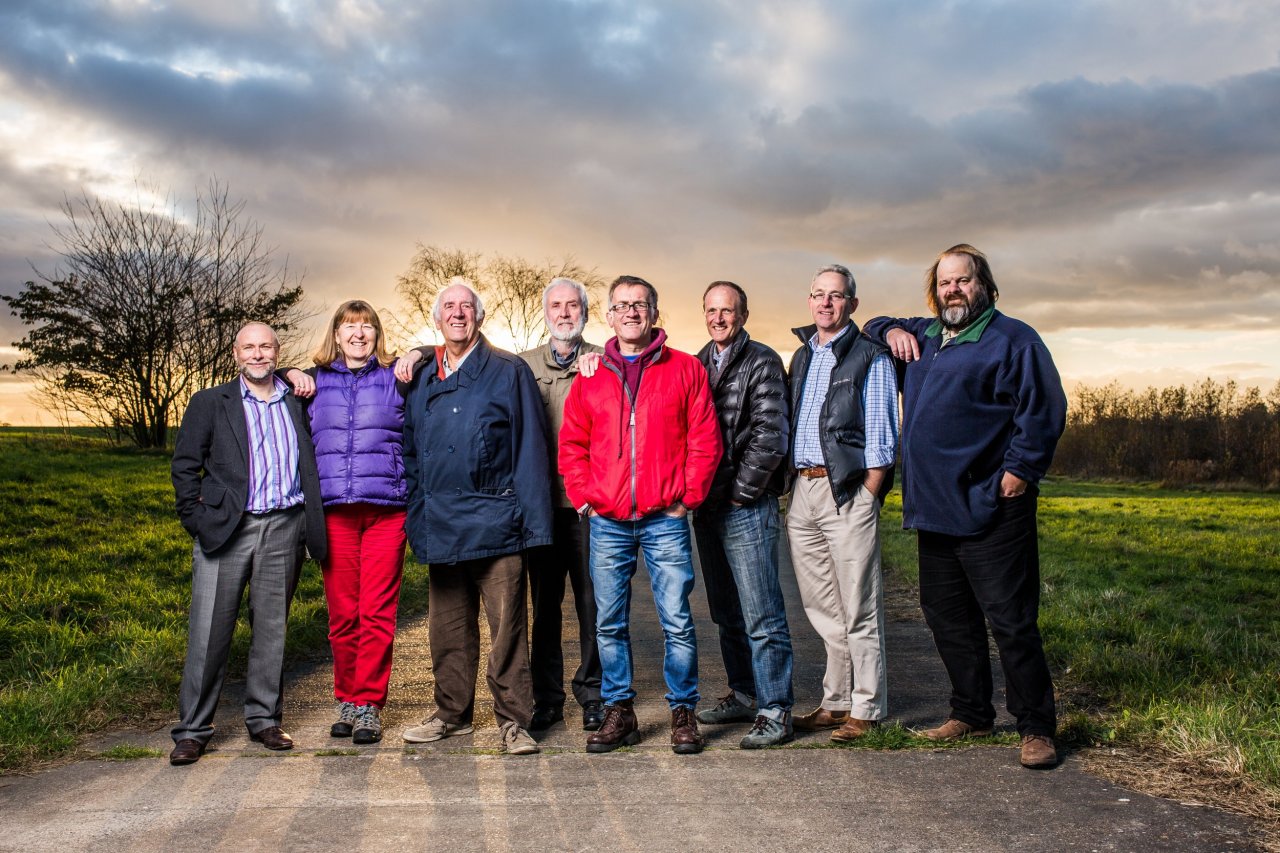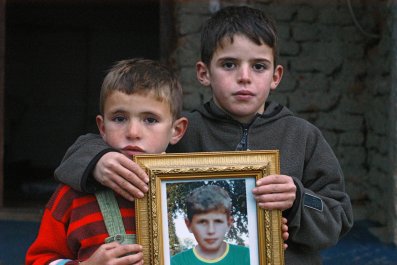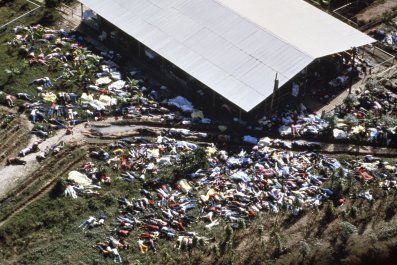The proposed site for the construction of The New Crofton Co-operative Colliery (NCCC) near Wakefield, West Yorkshire, sits literally and figuratively on a watershed. Its founder, Bill Birch, stands with one booted foot either side of a boundary line only he can see; on one side, rain water flows west into shallow gravel ponds, a breeding ground for the endangered great crested newt. And on the other, it flows east towards the old mining village of Nostall with Ryhill, Havercroft and Wintersett to the south.
Thirty years ago, 56 collieries were fully operational in Yorkshire, including a handful of open cast mines at Long Row, Moorhouse and Anglers, to the west of Wintersett where Birch was once a chief engineer. Anglers Coal Disposal Point then occupied this site, grading and delivering coal to the three big power stations in the Aire valley. Today, the power stations are still in operation but they are fueled by foreign coal, mostly from Ukraine. The mines are nearly all gone and nothing remains of the processing plant. Where offices, roads, an electricity sub-station and an automatic coal sampling shed once stood, there is only scrub and the stub of an abandoned railway track. Map in hand, Birch sketches with a stick the newt-proof fence that will surround the new mine. Seven million pounds has already been pledged by private and social investors. If he and the other nine founder members of NCCC can raise the remaining £6m needed to get underground, in January next year, the work will begin.
Arthur Ripley, a former mining engineer with a passion for newts, is deputy chairman of the Wakefield District Biodiversity group. His job is to make sure that the wildlife continues to be protected – particularly his beloved newts. But it is Birch's good fortune that Ripley is first and foremost a miner, having worked at collieries for 30 years. "Some days I was at the pit for 20-odd hours, because I loved it and because it mattered," he says. "If I didn't get a conveyor belt going, people would be laid off. It were about loyalty and camaraderie. You'd go to the club after work and people might be falling out with each other, or having if off with someone else's wife. But down there, if you didn't do your job right, you could kill someone. So you did your job right. It were the dangerousness of the job that brought closeness within the communities."
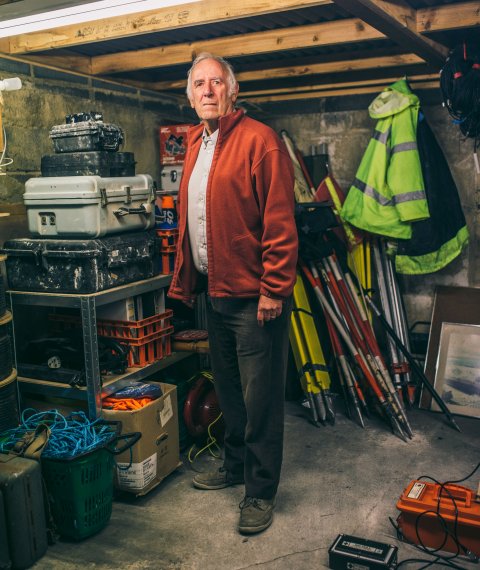
When the pits closed, a scattering of open cast mines sprung up in their wake, cutting vast, ugly swathes from the landscape. Coal from these would be transported by rail, crushed, taken onto conveyer belts into the sampling shed at Anglers Disposal point then dropped into a massive 1,500-tonne bunker which stood five stories high and could be seen from far and wide. "At least it was painted green," recalls Birch. "It were grey." snaps Ripley. "And it were a bloody eyesore. But that said, this were a living, breathing place, where men were doing a job of work and providing for their families."
When Margaret Thatcher's Conservative Party came to power in 1979, Britain produced 122m tons of coal from 219 underground and around 60 open cast mines. Today, the UK coal industry has been reduced to just three substantial mines; with two of these, Kellingley and Thoresby in Nottinghamshire, scheduled for closure in 2015 with the loss of 2,000 jobs.
By coincidence, planning permission for the New Crofton Co-operative Colliery was granted on June 19, 2014 – just one day after the 30th anniversary of 'The Battle of Orgreave,' a violent confrontation between police and mine workers at the height of the miners' strike in 1984. The idea that Whitehall could meddle with an industry so deeply ingrained still provokes fury here. Few deny some pits were unproductive and needed to be shut, but the relentless closures first by Thatcher and then John Major, "a man who ran away from the circus, telling us how to run our pits!" is felt to be a national betrayal. "What I saw can never be forgotten," says Ripley, shaking his head. "The government putting out lies and newspapers printing them, turning man against man and village against village. It was divide and conquer. The anger never, ever goes away."
GROUNDWORK
Despite political efforts to promote greener energy sources, coal-fired power generation has been rising steadily across the European Union. Coal still supplies 40% of Britain's energy needs – rising to 50% in winter – and most of it (10m tonnes/45MT) now comes from The Siberia Coal Energy Co, which, according to the company's website, exports 31m tonnes of coal a year, nearly a quarter of that to the UK, its biggest single market.
The current price for power station coal is roughly $75.35 per tonne. NCCC will produce it for $50 per tonne. But this isn't just about price. "If you consider the cost of haulage from Siberia to the west coast of Russia and around Norway, Putin has to be subsidising Russian coal," says Birch. "When we're about to go head to head over sanctions, isn't it better to have local coal, mined by local people to supply local power stations?"
According to World Coal Reserves statistics, there is still 2.3 billion tonnes of recoverable coal in the UK. It is this fact, and the desire to create a co-operative along the lines of the hugely successful Mondragon project in southern Spain (a federation of humanist worker co-operatives, begun in 1956 and now employing 75,000 people) that drives Birch. The expensive job of locating the coal has already been done: The British Coal Opencast Executive sunk 650 bore holes on this site during the 1980s establishing that the geology is relatively simple. "This isn't about emotional investment," says Birch briskly. "This site has the best amount of coal - 4.9 million tonnes recoverable (valued at £270m at current prices) - with the best infrastructure, in the best location."
Gaining control of the site and getting planning permission took 18 months and cost £65,000, but ultimately, "sailed through" with no objections. During his 21 years working for British Coal's unpopular open cast division, Birch learned to do things from the bottom up: meeting local people – often through the parish council. He'd talk to communities about their lives, about what mattered to them and what their aspirations were. "Invariably what they wanted was something back," he says. "It was always something they felt had been lost or taken: the village hall where they used to dance, the bit of green where they'd played as children. They wanted the canal restored or a monument re-built. These were communities who felt they'd been completely forgotten by those in power."
When Birch first went to see the members of Crofton Parish Council, once a thriving pit village, now a reconstructed commuter dormitory for Wakefield and Leeds, to discuss the idea of a mining co-operative they thought he was raving mad. "I told them there are going to be good jobs, bringing real revenue into Crofton, Wintersett, Ryhill and Havercroft. And on top of that, a minimum of £10m will be placed into a charitable trust, controlled by the villages, not by politicians. "They were mostly polite," he says. "But they were defeated. The attitude was: This won't happen, because no good will ever come of this place again."
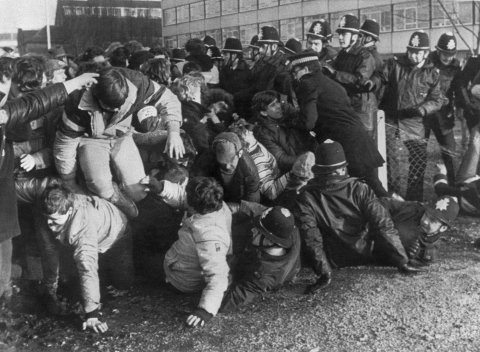
Beeston, where Birch runs his consultancy, Blast Log, is one of the poorest and most isolated suburbs of Leeds, made infamous by the London bomber Mohammad Sidique Khan. Birch lives in a smart three-bedroomed semi with his wife Jean, and goes to work in the one next door. It is indistinguishable from its neighbours until you get inside. Boots, hard hats, ropes and cases filled with paraphernalia are piled up in the hall and a couple of scruffy offices, upstairs and down, are lined with shelves loaded with a haphazard collection: dusty models of articulated trucks, electrical wiring, journals and copies of The Blasters Handbook. The major part of the six-year-old company's work is in creating controlled explosions for the quarrying industry using electronic detonators which are incredibly precise.
Now 64, he's spent a lifetime in mining – 21 years with British Coal, followed by 16 years teaching mining engineering at the University of Leeds. Jonathan Clarke, NCCC's financial wizard, is younger, greener, and brimming with enthusiasm. Clarke, 48, studied environmental sciences at university and afterwards joined the radical environmental movement. "I came away thinking this is insanely complex. There are no simple answers," he says. For the past 15 years, he's worked as a social entrepreneur, living in Hull, running Humberside co-operative development agency on a shoestring. "As you go through life there are pivotal moments which change the way you look at things," he says. "A couple of years ago I went rock climbing with a group of young offenders. One was a decent kid who was determined to go straight. Six months later I picked up the Hull Daily Mail and saw the boy's name – he'd died from an overdose." His eyes well up telling this story. "It was moments like that when I've thought: "People's lives matter. There's a lot of unfairness, a lot of injustice. And I've spent the last 20 years banging away in my corner of it, trying to address those things in any way that I can."
Clarke is currently building two wind turbines in North Yorkshire. In 2010, he was asked to run the co-operative enterprise scheme for the Yorkshire and Humber region, offering advice to local businesses on forming co-ops. I remember sitting with Bill and Alan, listening to what they wanted to do and I thought: "This sounds f–ing great."
The plan is to create a drift mine – cheaper than deep mining and less destructive to the environment than open-cast. Coal will be extracted using a room and pillar technique which leaves 40% of the coal untouched to support the ground above. Birch demonstrates with a wad of magazines screwed together at intervals. A roof bolter works ahead, driving massive bolts through the seam, while a machine called Continuous Miner follows in its wake, clawing out coal and throwing it onto a conveyor belt behind. The coal will then be graded and transported directly to local power stations using the old rail track.
The 10 founder members of The NCCC include a hydrogeologist, a couple of geotechnical engineers, a surveyor and a landscape artist. They have so far each sunk £300,000 into the New Crofton Colliery: the directors, Birch, Clarke and Bilton, who is responsible for the design of the mine and its operation, have invested £100,000 each in cash and an estimated £200,000 per head in unpaid time and effort. Four hundred small investors have been invited to invest from £500 to £20,000 each, raising around £2m and a further £11.5m is being sought from outside investors.
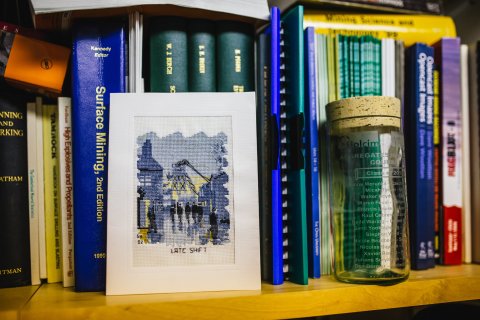
When the mine is fully operational, it will employ a workforce of around 60. Birch will take a salary of £70,000. Clarke and Bilton, £40,000 a year for a four-day week. The rule is that those employed at the top will never earn more than five times the salary of those at the bottom – the security guards and cleaners on earnings of £17,000.
The directors expect a turnover of £12m a year, with a clear profit of £5m: of that, £2.5m will be shared equally amongst the workers in the form of dividends – and a minimum of £10m will go into the charity over 20 years to build local infrastructure and training programmes.
POWERING UP
If everything goes according to plan, every member of the mine will get £20,000–£30,000 on top of their salaries each year. That's a lot of money. "This is not a community cafe," Birch roars. "It's a highly profitable enterprise – and unlike John Lewis, where the top guy gets the biggest dividend, the money will be divided fairly amongst the number of people working in this together – because we want equality."
The remaining £2.25m will fund Mondragon-upon-Wakefield. "By the end of the 20 years, when I'm gone, there'll be four or five or six co-operatives doing all kinds of stuff. It could be engineering. Jon's dead keen on alternative energy. We could do banking. Or housing. Why can't we look at everything Mondragon has achieved and say 'That is our vision'?"
In November 2011, four months after Birch's disastrous first meeting with Crofton Parish Council, he and Clarke prepared a new presentation. "We used graphs and maps – and because we were presenting to a mining community, they quickly grasped what we were trying to do. Such was the enthusiasm that evening, suddenly the debate began to be led from the inside. There's a feeling in this part of the country that as far as the government is concerned, the North might as well not exist, for all the understanding of the issues that concern people here. They saw in us a chance to take control."
You can check UK National Grid status at any time. It's a bit like peeking at the fluctuating dials in the cupboard under the nation's stairs. At 3pm, on a warm October day, it was 35.5GW (in winter that figure can rise to as much as 55GW) with 15 GW coming from coal and another 15 from gas. The remaining 5.5GW is from metered wind farms and nuclear energy. Currently the UK has one old Magnox nuclear plant still operating, seven AGR (advanced gas-cooled reactor) designs and one relatively modern PWR (pressurised water reactor) at Sizewell B. They're all run flat out to maximise income. Even so, along with a tiny input from metered wind farms, they're only powering 11% of our needs.
The UK Department of Energy and Climate Change (DECC) lists 16 coal-fired power stations in the UK, nine purely coal-fed, with a capacity of 23,941MW. They include Drax at Selby (EDF energy), Ironbridge located in Shropshire (E.On) and Longannet in Fife (Scottish power). Since coal is still the cheapest form of fuel, the forecast from National Grid is that we're going to be using it as a major source of energy for at least the next 20 years, especially as gas prices have risen. Against this background, we have closed nearly every mine in Britain on the basis that we can import coal more cheaply. This area alone has lost 15 collieries in the last 20 years.
After Nostell Colliery closed in 1987, New Crofton Pit Village was completely bulldozed until barely a cobble remained and new, commuter houses built on it. There is a post office, a mini market, two chip shops and a carpet shop. There aren't any obvious signs of poverty but there's no industry either, and little aspiration. The local academy opened a sixth form for the first time this year. All that remains of Crofton's mining heritage is half a pit head wheel, painted red and embedded in a grass verge at the top end of the village.
Christine Dart, a former school governor and the editor of the village magazine, The Crofton Beacon, has a quiet, flinty determination. Dart's father, Reg was born in 1929 and was a miner all his life. When Royston Drift closed he got redundancy and never worked again. He loved the allotment where he grew vegetables for his family and dancing with Dart's mum, Rita at the working men's club in Ryhill on Saturday nights.

"If you don't live in a mining area you think mines are terrible places and no one wants their kids to go down," she says. "But that's not the reality. Men prided themselves on the mines and villages were founded on them. You take the mines away and there's no reason for the villages to be there."
Enthusiasm for the NCCC is partly ideological, partly nostalgic. But the men who remember the old mining tales are fading away and their stories feel less and less relevant to a younger generation who have never been near a pit. "The popular image of a miner with a pick and shovel 'hand filling' is stereotypical and out of date. They've not been like that for many years," says Trevor Chalkley, a mining engineer at Kellingley pit 20 miles away. "They're highly skilled engineers, they're electricians. The technology is now so advanced, we can hook up from 8 miles underground to Philadelphia and tune our machines, the same way you do a car. These machines are that big and that powerful, the heat is tremendous. The guys are super-trained and super-fit. They regularly work 12-hour shifts in temperatures of 37 degrees, probably a bit higher." What do they wear down there? "Nowt but dayglo boxer shorts," he deadpans.
When Kellingley closes in January next year, Chalkley has been offered work as a tour guide at the National Mining Museum in Wakefield. The irony is not lost on him. "I'll be a historic exhibit, me." Cheryle Bashforth, chair of Ryhill Parish Council, says her husband who worked at Nostell as a joiner, goes regularly to the museum just so he can get himself underground. "It's the whole environment he misses."
"It's the smell," agrees Chalkley. "Everyone smelled the same."
Bashforth's father worked at Monckton and Woolley collieries operating 'the cage' – the lift taking men, animals and equipment – up and down the mine shaft. Her brother, Trevor, went to art school then into mining "for the security and the good pay." He moved from Nostell to Selby in 1983, just before the miners strike. "They were all out for a year and a day and they lived on their wits," she says. "He shot game and like everywhere else, the women's jobs kept everything going. A lot of women's lives were never the same. Some became much stronger because they were earning a living for the first time, but marriages suffered because of that. We don't need David Cameron to tell us about Big Communities," she snorts. "We've had a big community here for 30 years."
In the local WMC, Chalkley can point out the men who stuck out the strike, and in another corner, those who didn't. Not only are the two groups of men still not talking, some of the kids in the village refer to other kids' parents as scabs. "It's a word that doesn't surface often, but it's there and it makes it hard for this village to go forward."
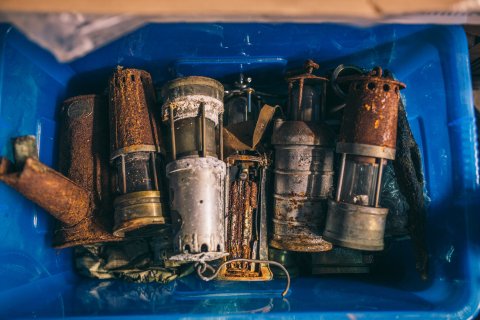
The charitable fund will be run by 10 trustees: five elected from the local community and five from the NCCC who will, over the next 12 months, work out how the £10m can be spent to get the maximum benefit. Many of the school leavers here end up as 'call centre fodder' or unskilled labour in the warehouse and distribution centres springing up along the M1 and M62. There'll be a pot for apprenticeships and bursaries to support talented local kids to become doctors, scientists, electricians and engineers.
Birch, once a member of the Conservative party, believes the politician responsible for the total destruction of mining in the UK was not Thatcher, but Major. "Under his political stewardship, even the profitable collieries were systematically destroyed and he employed a scorched earth policy of leaving no trace behind, apart from the odd half pit head wheel buried in a hedgerow."
Perhaps the real issue is that Britain hasn't had a structured energy policy for 30 years. The debate over where our electricity will come from trundles on: Wind? Wave? Biomass?, Nuclear? Fracking for gas? Neither political party has a clear direction. When Tony Blair came into power, he shut the Selby mine. "Effectively, we paid a fortune to shut down the most advanced coalfield in Europe," says Birch. "It cost £1.5bn to sink five collieries and they only mined one seam. So now we have three of the biggest coal-fired power stations sat right on top of a coalfield, which runs all the way round the back of York to Germany. Absolute madness."
From the start, Birch planned the New Crofton Co-operative Colliery as a legacy project. "I want this to be the last good thing I do," he says. Last spring, a couple of UK coal consultants in sharp suits came down to present on the proposed Deanfield open-cast mine. There was a lot of anger at the meeting of Shalstone Parish Council that night. NCCC's real legacy might be igniting the embers of a support system within the community which could ultimately be more powerful than either big business or the politicians. "I want to create a system where people with no power cannot be bought and sold," says Birch. "I can't save the mining industry. But I know I can save these three villages."



